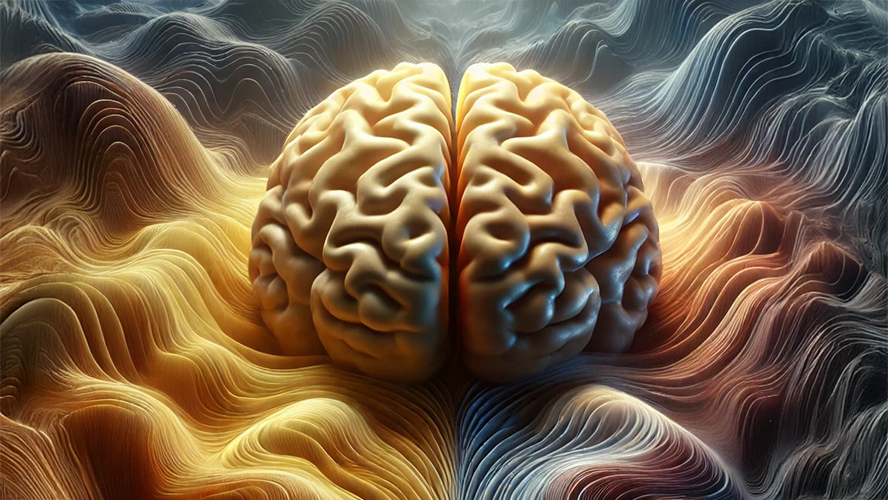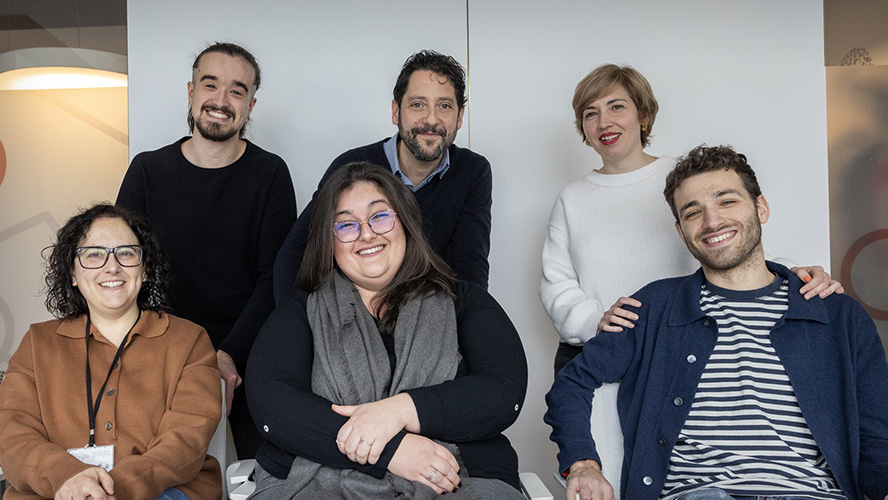
In a landmark study published in Science, Dr. Maurizio De Pittà, Scientist at UHN’s Krembil Brain Institute, Dr. Fernando García-Moreno of the Achucarro Basque Center for Neuroscience, and their colleagues explored the long-debated evolutionary origins of the neocortex—the part of the brain responsible for complex functions such as cognition and sensory perception.
Until now researchers were uncertain whether the process forming the neocortex and similar brain structures in amniotes—organisms, like humans, that develop in amniotic fluid—was conserved, meaning it was passed down through evolution from a common ancestor.
Using an innovative approach combining brain cell (also called neurogenic), gene expression (also called transcriptional), and mathematical analyses, the team looked for commonalities in genes and the timing and location of the growth and development of the neurons in the circuits that make up structures like the neocortex (called pallial circuits). If the developmental process was conserved, these features would be the same, or homologous, across the models of different amniotes.
However, rather than similarities, the team found significant divergence instead. Analysis revealed that genes expressed by the neurons destined to be part of pallial circuits differed greatly very early on in development. Researchers also found that the timing and location of neuron development varied markedly between models. These findings challenge the theory that structures like the neocortex are conserved and instead support an alternate hypothesis: that they evolved convergently.
Using advanced mathematical models developed by Dr. De Pittà with the Krembil Computational Neuroscience Hub to further analyze their findings, the research team identified that while the developmental origins of pallial circuits in different amniotes vary, all these circuits perform very similar (or analogous) functions. Equipped with this interpretation, the researchers propose that because of the vital role of structures like the neocortex, coupled with environmental pressures (for example, available nutrition), evolution drove different developmental processes to produce the same type of circuits.
Drs. De Pittà and García-Moreno and their colleagues’ work is an important step towards understanding our evolutionary history. It not only deepens our understanding of the driving forces behind neurodevelopment but may also inspire other researchers to seek evidence to explain why and how other brain structures, or other bodily systems, evolved. Understanding how and why these systems came to be is crucial for advancing their care in the future.
Dr. Eneritz Rueda-Alaña is the first author on this study. She is a Postdoctoral researcher at The Basque Centre for Neuroscience Achucarro in Spain.
Drs. Fernando García-Moreno and Maurizio De Pittà are the senior authors on this study. Dr. García-Moreno is a Principal Investigator and Ikerbasque Research Associate Professor with the Achucarro Basque Centre for Neuroscience. Dr. De Pittà is a Scientist at the Krembil Brain Institute at UHN, Assistant Professor in Temerty Faculty of Medicine at the University of Toronto, and Affiliated Scientist at the Basque Center of Applied Mathematics.
This work was supported by the Krembil Foundation Seed Fund, the Ikerbasque – Basque Foundation for Science, EASI-GENOMICS, the Spanish Ministry of Science, Innovation, and Universities (MCIU), State Research Agency (AEI), and European Regional Development Fund (FEDER), the Séneca Foundation, the Chan-Zuckerberg Initiative, the Silicon Valley Community Foundation, the Erling-Persson Family Foundation, the Knut and Alice Wallenberg Foundation, the Swedish Research Council, the Swedish Cancer Society, the Department of Industry, Tourism and Trade of the Government of the Autonomous Community of the Basque Country, the Innovation Technology Department of the Bizkaia County, and UHN Foundation.
Drs. Marco Grillo and Sergio Marco-Salas co-founded a company, Spatialist, that does data-analysis for spatial-omics.
Rueda-Alaña E, Senovilla-Ganzo R, Grillo M, Vázquez E, Marco-Salas S, Gallego-Flores T, Ordeñana-Manso A, Ftara A, Escobar L, Benguría A, Quintas A, Dopazo A, Rábano M, dM Vivanco M, Aransay AM, Garrigos D, Toval A, Ferrán JL, Nilsson M, Encinas-Pérez JM, De Pittà M, García-Moreno F. Evolutionary convergence of sensory circuits in the pallium of amniotes. Science. 2025 Feb 14; 387: eadp3411.

Team of researchers from the Achucarro Basque Center for Neuroscience, including senior author Dr. Fernando García-Moreno (centre, top row) and first author Dr. Eneritz Rueda-Alaña (centre, bottom row).

Senior author, Dr. Maurizio De Pittà.

